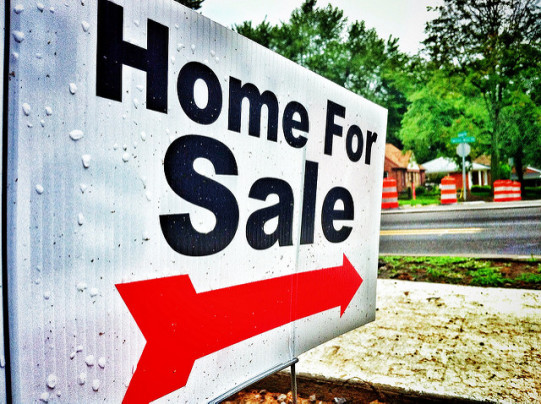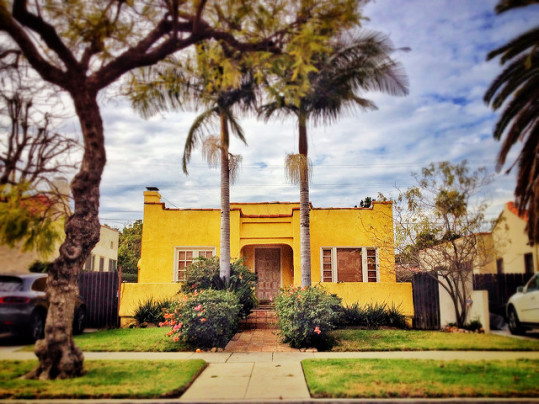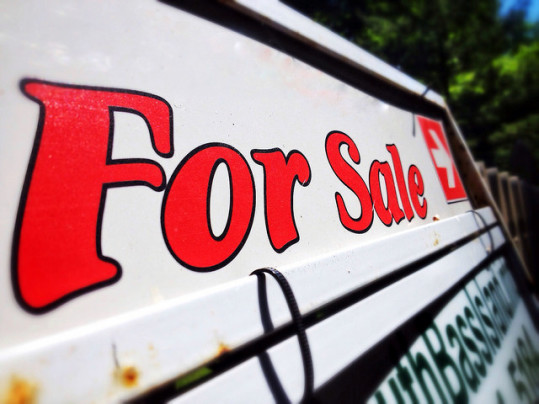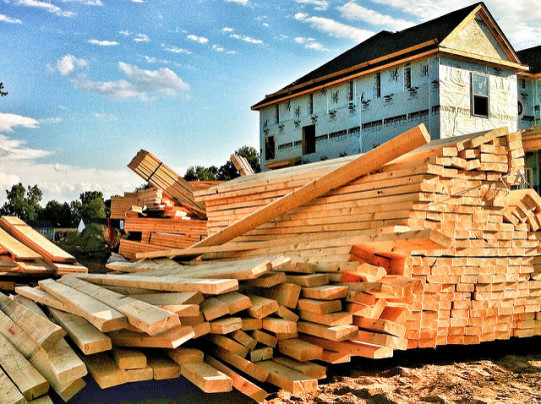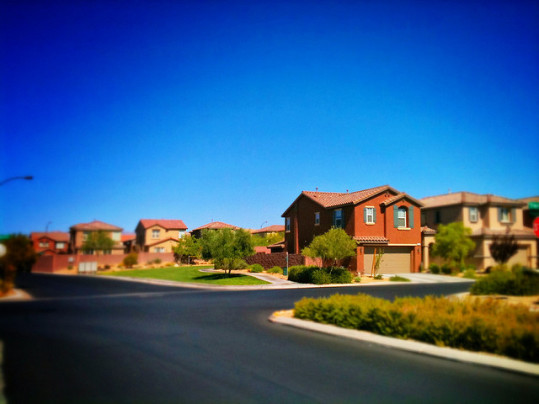Fannie Mae’s Home Purchase Sentiment Index is based on the results of a monthly survey that asks Americans about their attitudes toward buying and selling a home, the economy, their household finances, home prices, mortgage rates, etc. In March, the index dropped 2.5 points from the previous month. This indicates Americans are feeling more cautious about the housing market and less optimistic about their jobs and income. Doug Duncan, Fannie Mae’s senior vice president and chief economist, says Americans’ feelings about the housing market are starting to become affected by pessimism about the overall economy. “Growing pessimism over the last three months about the direction of the economy seems to be spilling over into home purchase sentiment,” Duncan said. “The gap between the share of consumers who think the economy is on the wrong track and the share who think it is on the right track has widened, nearly matching its reading last August, when concerns regarding China and oil prices led to the biggest stock market plunge in years. In turn, we saw dips this month in income growth perceptions, attitudes about the home selling climate, and job confidence, all of which contributed to the lowest HPSI reading in the last year and a half. These declines seem to be at odds with recent news of solid overall job creation, but may reflect weakening economic performance in certain industries.” Still, despite the monthly dip, the index remains virtually unchanged from where it was at the same time last year. More here.
Archive for April 2016
Is The Homeownership Rate Bouncing Back?
Since peaking at nearly 70 percent in 2004, the homeownership rate has been falling. In fact, it fell to a 48-year low during the second quarter of last year. Of course, there are many factors that contributed to the drop off. But, according to a recent study, the changes that have taken place over the past 12 years can be seen most dramatically when looking at the numbers generationally. For example, the study found that the homeownership rate has seen its biggest decline among Americans between the ages of 35 and 44. Among that group, the number of homeowners is 11 percent below its peak. Comparatively, the rate among consumers under the age of 35 is 9 percent off its peak and the rate among Americans 65 and older has actually risen 2 percent. In other words, most of the drop in homeownership has been among Americans 44 and younger. The encouraging news is that many would-be buyers on the younger end of that spectrum have expressed an interest in homeownership and are planning to buy once they’ve put together some savings. The situation among 35-to-44 year olds, however, may be a bit more complicated. This is due to the fact that many of them are boomerang buyers who bought their first home just before home prices plummeted. Over the past few years, as home values have bounced back, more of these potential buyers have seen their financial situation improve, which may help lead them back down the path of homeownership. More here.
Mortgage Rate Drop Stirs Demand
According to the Mortgage Bankers Association’s Weekly Applications Survey, average mortgage rates dropped sharply last week from the week before. Rates were down across all loan categories, including 30-year fixed-rate loans with both conforming and jumbo balances, mortgages backed by the Federal Housing Administration, and 15-year fixed-rate loans. MBA economist Joel Kan told CNBC the decline was brought on by recent comments from Fed Chair Janet Yellen. “Rates fell last week as a more cautious message from Chair Yellen about the economic outlook and continuing concerns about weaker growth abroad kept demand for U.S. Treasurys high,” Kan said. “The 30-year fixed mortgage rate dropped 8 basis points, the largest single week decline in eight weeks.” Falling rates spurred demand for mortgage applications. In fact, overall demand was up 2.7 percent over the week before – driven by a 7 percent surge in refinance activity. And though purchase demand was down 2 percent from one week earlier, it remains 11 percent higher than at the same time last year. The MBA’s weekly survey has been conducted since 1990 and covers 75 percent of all retail residential mortgage applications. More here.
Most Renters Want A Single Family Home
A new survey of consumer preferences found that an overwhelming majority of current renters say, if they were to move, that they’d prefer to buy a single-family home. In fact, a full 75 percent of renters who responded to the National Association of Realtors quarterly Housing Opportunities and Market Experience survey said they’d like to own a home and just 21 percent of them said they’d prefer to buy in an urban area. Lawrence Yun, NAR’s chief economist, said the fact that most Americans prefer a larger home outside of the city isn’t exactly news. “The American Dream for most consumers is not a cramped, 500-square-foot condo in the middle of the city, but instead a larger home within close proximity to the jobs and entertainment an urban area provides,” Yun said. “While this is not a new discovery, supply and demand imbalances and unhealthy levels of price growth in several metro areas have made buying an affordable home an onerous task for far too many first-time buyers and middle-class families.” But while a majority of renters and younger buyers said they’d prefer a larger home in the suburbs, respondents over the age of 65 were the most likely to consider buying a condo and almost as likely as respondents under the age of 35 to say they’d consider buying in an urban area. More here.
Latest Jobs Report Hints At Building Boom
The March jobs report from the U.S. Bureau of Labor Statistics contained good news for the economy, as the number of jobs created rose by 215,000. In addition, labor force participation improved for the fourth consecutive month. But the report also offered a glimpse of a potentially positive trend for the housing market. When it comes to the market for single-family homes, affordability conditions have garnered a lot of attention this year. That’s because, in a lot of markets, the number of homes available for sale hasn’t kept up with the number of Americans who are interested in buying a house. Naturally, when there are more buyers than homes for sale, home prices go up. And, while that has been good news for current homeowners – and especially those that fell into negative equity following the housing crash – home price increases and lack of inventory are now a concern for the growing number of potential buyers hoping to purchase a home this year. However, the jobs report shows construction employment rose by 37,000 in March, including a 12,000-worker increase in residential specialty trade contractors. This improvement could be an indication that home builders are beginning to build more new homes, which will help alleviate upward pressure on prices, balancing the market and leading to more favorable conditions for buyers this year. More here.
Optimistic Outlook Sees Brighter Days Ahead
According to Freddie Mac’s March Outlook, the housing market is poised to have its best year since 2006. The optimistic forecast is based on the belief that an improved job market – combined with low mortgage rates and a growing number of housing starts – will help boost sales this year and build momentum for 2017. “Housing markets are poised for their best year in a decade,” Sean Becketti, Freddie Mac’s chief economist, said. “In our latest forecast, total home sales, housing starts, and house prices will reach their highest levels since 2006. Low mortgage rates, robust job growth and a gradual increase in housing supply will help drive housing markets forward. Low levels of inventory for-sale and for-rent and declining housing affordability will be major challenges, but on balance the nation’s housing markets should sustain their momentum from 2015 into 2016 and 2017.” According to the outlook, Freddie Mac expects housing starts to increase this year, which will help slow down the rate at which home prices have been increasing. In fact, the outlook says annual house price appreciation will be 4.8 percent in 2016. In 2015, it was about 6 percent. More here.
What Neighborhood Features Hurt Home Values?
When searching for a house to buy, it’s easy to focus in on the home itself and forget to have a look around the neighborhood. But, as the saying goes, real estate is all about location. So, in addition to everything else there is to consider as a prospective home buyer, keeping an eye on the surrounding neighborhood is always a good idea. For example, a recent article on Realtor.com looked at certain neighborhood features and determined which are most likely to drag a home’s value downward. Not surprisingly, bad schools led the list. In fact, when comparing homes in a zip code with bad schools as others in the same county, home prices were 22.2 percent lower in areas with subpar schools. Strip clubs were also near the top of the list, dropping prices by nearly 15 percent in surrounding neighborhoods. The analysis found a high concentration of renters, homeless shelters, and cemeteries were some of the other things buyers should watch out for when surveying a neighborhood. Each of those traits caused neighborhood houses to be more than 10 percent lower than surrounding areas. Less concerning but still a drag on values, funeral homes, power plants, shooting ranges, and hospitals also all took a toll on the value of homes in the vicinity. More here.
